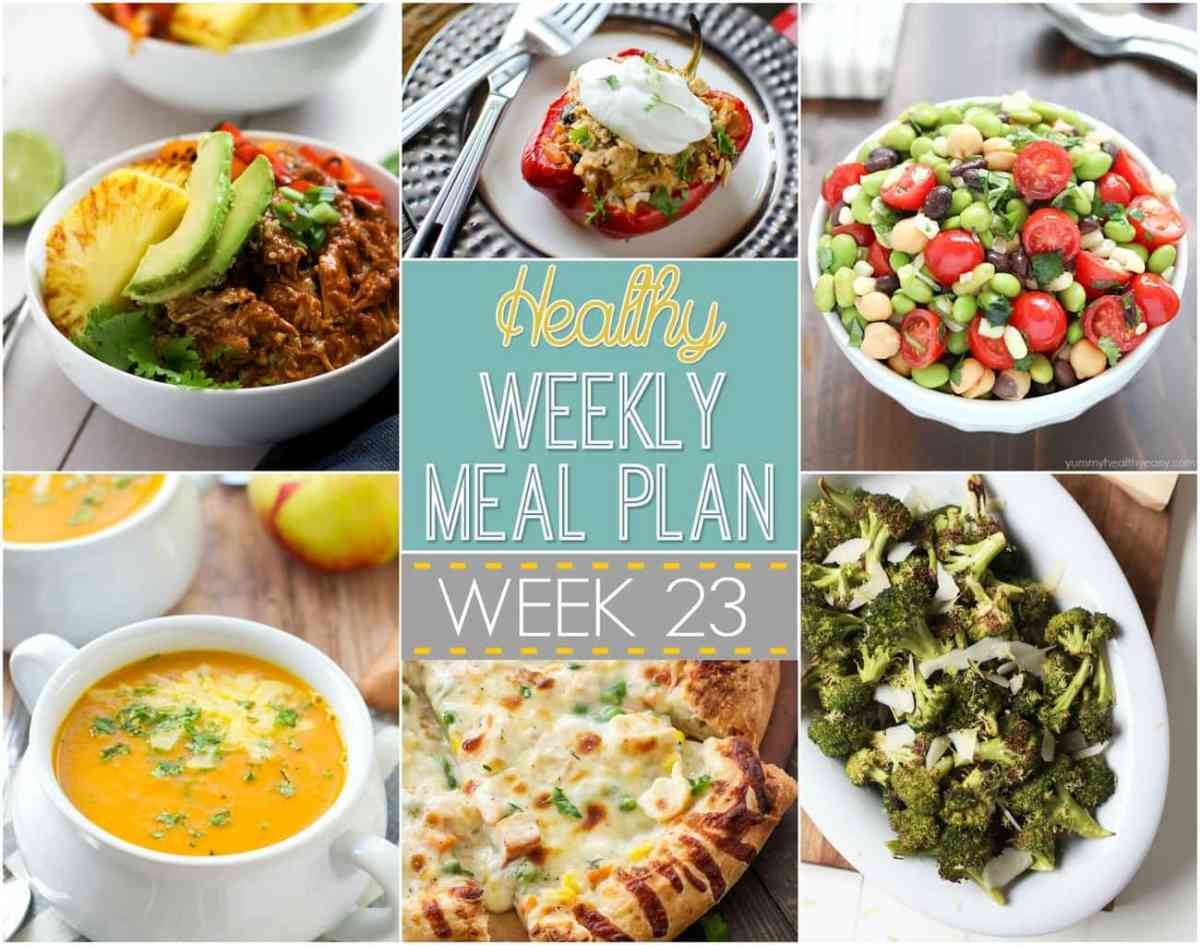Navigating a nut-free diet can feel like charting uncharted waters, especially when juggling busy schedules. But what if meal planning became a breeze, even without relying on nuts? This guide unveils the secrets to crafting delicious, nutritious, and completely nut-free meals, transforming your weekly food routine from a chore into a culinary adventure. We’ll explore the nuances of nut-free cooking, from understanding allergies to mastering substitutions, providing you with a toolkit of recipes and strategies to effortlessly nourish yourself and your family.
Imagine a week where breakfast, lunch, and dinner are planned out, each meal a vibrant testament to healthy eating, free from the worry of hidden nuts. We’ll delve into the essentials of meal planning, offering practical tips for grocery shopping, minimizing waste, and creating balanced meals that cater to a nut-free lifestyle. Discover a treasure trove of nut-free recipes, from quick weekday lunches to satisfying weekend dinners, all designed for ease and enjoyment.
Basic Meal Planning Principles for Nut-Free Diets
Successfully navigating a nut-free diet requires careful planning to ensure both nutritional adequacy and ease of meal preparation. This section details essential principles for creating a simple yet satisfying nut-free weekly meal plan, minimizing stress and maximizing your time. We’ll explore strategies for efficient grocery shopping and waste reduction, ultimately guiding you through the creation of a balanced and delicious nut-free menu.
Five Essential Tips for Successful Nut-Free Meal Planning
Careful planning is crucial for successful nut-free meal preparation. These five tips will streamline your process and prevent common pitfalls associated with dietary restrictions. Each tip addresses a key aspect of creating a manageable and enjoyable nut-free eating experience.
- Read Labels Meticulously: Hidden nuts and nut derivatives are common in processed foods. Always check labels carefully, paying close attention to ingredients lists and allergen warnings. Even seemingly innocuous products can contain traces of nuts, so vigilance is key.
- Stock Your Pantry Strategically: Keep your pantry well-stocked with nut-free staples like rice, quinoa, various grains, legumes, seeds (excluding nuts), and a variety of spices. This provides a foundation for quick and easy meal preparation.
- Embrace Substitution: Many recipes can be adapted to exclude nuts. Sunflower seeds, pumpkin seeds, or tahini can often substitute for nut butters, while other seeds or breadcrumbs can replace nut-based coatings or additions.
- Plan for Cross-Contamination: If you’re preparing meals for others who consume nuts, take extra precautions to prevent cross-contamination. Use separate cutting boards, utensils, and cooking surfaces. Thorough cleaning between preparations is also essential.
- Keep it Simple: Don’t overcomplicate your meal plan. Start with simple, straightforward recipes and gradually introduce more complex dishes as you gain confidence. The goal is to create a sustainable and enjoyable eating routine.
Weekly Meal Plan Template
A well-organized template is essential for efficient meal planning. This template provides structure and helps visualize your weekly menu, preventing last-minute meal decisions and ensuring balanced nutrition.
| Day | Breakfast | Lunch | Dinner |
|---|---|---|---|
| Monday | |||
| Tuesday | |||
| Wednesday | |||
| Thursday | |||
| Friday | |||
| Saturday | |||
| Sunday |
Strategies for Managing Grocery Shopping and Minimizing Food Waste
Effective grocery shopping and waste reduction are vital components of successful meal planning. These strategies minimize expense and promote sustainable food practices.
- Create a Detailed Shopping List: Using your meal plan as a guide, create a comprehensive shopping list. Categorize items by grocery store sections to streamline your shopping trip.
- Shop the Perimeter: Focus on fresh produce, lean proteins, and whole grains located primarily around the perimeter of most grocery stores. These items are generally healthier and less processed.
- Utilize Leftovers Creatively: Plan to repurpose leftovers into new meals. Leftover roasted vegetables can become a delicious addition to omelets or salads, for example.
- Proper Food Storage: Store food correctly to extend its shelf life. Use airtight containers, and refrigerate or freeze perishable items promptly.
- Freeze Excess Portions: Portion out extra food for future meals and freeze them. This prevents waste and provides convenient meal options for busy days.
Step-by-Step Guide on Creating a Balanced Nut-Free Meal Plan
This step-by-step guide simplifies the process of creating a healthy and balanced nut-free meal plan. Each step builds upon the previous one, guiding you from initial planning to a complete weekly menu.
- Assess Your Nutritional Needs: Consider your individual dietary requirements and preferences. Are there any specific vitamins or minerals you need to prioritize? Do you prefer vegetarian, vegan, or other dietary styles?
- Choose Your Recipes: Select a variety of nut-free recipes for breakfast, lunch, and dinner, ensuring a balance of protein, carbohydrates, and healthy fats. Look for recipes that use substitute ingredients for nuts.
- Create Your Weekly Menu: Fill in your weekly meal plan template with the chosen recipes. Consider variety and balance across the week.
- Make Your Shopping List: Compile a detailed shopping list based on your chosen recipes, ensuring you have all necessary ingredients.
- Grocery Shop and Prepare: Purchase your groceries and prepare your meals according to your plan. Consider batch cooking to save time.
Nut-Free Recipe Ideas for Breakfast, Lunch, and Dinner
This section provides a collection of delicious and easy-to-make nut-free recipes perfect for simplifying your weekly meal planning. Each recipe is designed to be both nutritious and satisfying, catering to a variety of tastes and dietary needs. We’ll explore options for breakfast, lunch, and dinner, ensuring you have a diverse and exciting range of meals throughout the week.
Nut-Free Breakfast Recipes
These breakfast recipes are quick, easy, and packed with flavor, providing a great start to any nut-free day. They emphasize fresh ingredients and minimal preparation time, perfect for busy mornings.
- Sunshine Scrambled Eggs with Spinach and Tomatoes: Imagine vibrant green spinach mingling with juicy red tomatoes in a bed of fluffy, golden scrambled eggs. This recipe is a visual feast. The ingredients are simple: 2 large eggs, 1 cup chopped spinach, ½ cup chopped tomatoes, salt, and pepper to taste. Whisk the eggs, sauté the spinach and tomatoes until softened, then combine everything in a pan and cook until the eggs are set. A sprinkle of fresh herbs adds a delightful finishing touch.
- Oatmeal with Berries and Sunflower Seeds: Picture a warm bowl of creamy oatmeal, studded with plump, juicy berries and crunchy sunflower seeds. This recipe is both comforting and visually appealing. The key ingredients are: ½ cup rolled oats, 1 cup water or milk (dairy or non-dairy), ½ cup mixed berries (strawberries, blueberries, raspberries), 1 tablespoon sunflower seeds, a dash of cinnamon, and a drizzle of honey or maple syrup (optional). Cook the oats according to package directions, stir in the berries and sunflower seeds, and top with cinnamon and sweetener if desired.
- Savory Sweet Potato and Black Bean Hash: This recipe presents a colorful and hearty breakfast option. Imagine cubes of roasted sweet potato, tender black beans, and vibrant red bell peppers all sautéed together. The ingredients are: 1 medium sweet potato, diced; 1 cup black beans, rinsed and drained; ½ red bell pepper, diced; 1 small onion, chopped; 1 tablespoon olive oil; salt and pepper to taste. Roast the sweet potato until tender, then sauté all ingredients together until heated through. A squeeze of lime juice adds a zesty finish.
Nut-Free Lunch Recipes
These lunch recipes are designed for variety and ease of preparation, ensuring a satisfying and flavorful midday meal without nuts. Each recipe focuses on quick assembly and readily available ingredients.
- Mediterranean Quinoa Salad: Picture a vibrant salad bursting with colors and textures: the fluffy quinoa, the deep red of the tomatoes, the bright green of the cucumbers, and the glistening olive oil. The ingredients are: 1 cup cooked quinoa, ½ cup chopped cucumber, ½ cup chopped tomatoes, ¼ cup crumbled feta cheese, 2 tablespoons Kalamata olives, 2 tablespoons olive oil, 1 tablespoon lemon juice, salt and pepper to taste. Combine all ingredients in a bowl and toss gently.
- Chicken and Vegetable Wraps: Imagine soft tortillas filled with tender chicken, crisp vegetables, and a creamy avocado dressing. The key ingredients are: 4 whole wheat tortillas, 2 cups cooked chicken, shredded; 1 cup shredded carrots, 1 cup shredded lettuce, ½ avocado, mashed; 2 tablespoons lime juice, salt and pepper to taste. Spread the avocado mixture on the tortillas, add the chicken and vegetables, and roll up tightly.
- Leftover Dinner Makeover: This lunch idea utilizes leftover dinner to create a quick and easy meal. Imagine transforming yesterday’s roasted vegetables and protein into a delicious and satisfying lunch. Simply reheat the leftovers and serve them in a bowl or wrap them in a tortilla. The possibilities are endless, depending on the previous night’s dinner.
Nut-Free Dinner Recipes
These dinner recipes showcase different cuisines and flavors, providing a diverse range of nut-free meal options. Each recipe is designed to be both satisfying and relatively easy to prepare.
- Italian Chicken Piccata: Imagine tender chicken breasts bathed in a bright, lemony sauce, accented by the subtle sweetness of capers. The ingredients are: 4 boneless, skinless chicken breasts, 2 tablespoons all-purpose flour, 2 tablespoons olive oil, ¼ cup dry white wine, ¼ cup chicken broth, 2 tablespoons capers, 2 tablespoons lemon juice, salt and pepper to taste. Dredge the chicken in flour, sauté in olive oil, then deglaze the pan with white wine and chicken broth. Stir in capers and lemon juice, and simmer until the sauce thickens.
- Spicy Shrimp Scampi with Zucchini Noodles: Picture succulent shrimp tossed in a vibrant, spicy scampi sauce, served over a bed of delicate zucchini noodles. The ingredients are: 1 pound shrimp, peeled and deveined; 2 medium zucchini, spiralized; 2 tablespoons olive oil, 2 cloves garlic, minced; ¼ teaspoon red pepper flakes; ¼ cup dry white wine; 2 tablespoons lemon juice, salt and pepper to taste. Sauté garlic and red pepper flakes in olive oil, add shrimp and cook until pink. Stir in white wine and lemon juice, and simmer until the sauce thickens. Serve over zucchini noodles.
- Moroccan Tagine with Chickpeas and Apricots: Imagine a fragrant and flavorful stew, brimming with tender chickpeas, sweet apricots, and warming spices. The key ingredients are: 1 tablespoon olive oil, 1 onion, chopped; 2 cloves garlic, minced; 1 teaspoon ground cumin; ½ teaspoon ground coriander; ¼ teaspoon turmeric; 1 (15-ounce) can chickpeas, rinsed and drained; 1 cup dried apricots, chopped; 1 (14.5-ounce) can diced tomatoes; 1 cup vegetable broth; salt and pepper to taste. Sauté onion and garlic in olive oil, then add spices and cook for 1 minute. Stir in chickpeas, apricots, tomatoes, and broth. Simmer until the sauce has thickened.
Adapting Existing Recipes to Be Nut-Free

Transforming your favorite recipes into nut-free delights is achievable with a little culinary creativity and ingredient substitution savvy. This process involves carefully identifying nut-containing ingredients, selecting appropriate replacements, and understanding how these changes impact the final product’s flavor and texture. By following these steps, you can enjoy your cherished recipes without compromising on taste or safety.
Identifying and replacing nuts in recipes requires a keen eye for detail and a familiarity with common nut substitutes. Many recipes utilize nuts not only for their flavor but also for their textural contributions, such as adding crunch or binding ingredients together. Successful adaptation necessitates considering both aspects.
Common Nut-Containing Ingredients and Their Substitutes
Several ingredients commonly found in recipes contain nuts or are derived from them. Understanding these ingredients and their viable replacements is crucial for successful nut-free adaptations. The following table highlights some key examples, emphasizing the importance of choosing substitutes that closely mimic the original ingredient’s properties.
| Nut-Containing Ingredient | Nut-Free Substitute | Considerations |
|---|---|---|
| Almonds (flour, butter, milk) | Sunflower seed flour, coconut oil, almond-free milk (e.g., soy, oat, rice) | Sunflower seed flour can offer a slightly nutty flavor, but generally works well. Coconut oil adds richness; adjust quantity based on the recipe. |
| Peanuts (butter, oil) | Sunflower seed butter, avocado oil | Sunflower seed butter has a similar consistency to peanut butter but a slightly different flavor profile. Avocado oil provides a neutral flavor. |
| Cashews (butter, cream) | Tahini (sesame seed paste), coconut cream | Tahini provides a rich, slightly savory flavor, while coconut cream offers a creamy texture. |
| Walnuts (pieces, oil) | Pumpkin seeds, grapeseed oil | Pumpkin seeds provide a pleasant crunch, and grapeseed oil is a neutral-flavored alternative. |
Strategies for Maintaining Flavor and Texture
Successfully adapting a recipe requires strategic ingredient substitutions that maintain the desired flavor and texture. This often involves experimenting and adjusting quantities to achieve the optimal result. The goal is to create a dish that is both safe and delicious.
For instance, if a recipe calls for almond flour for its binding properties, sunflower seed flour can often serve as a suitable replacement. However, the quantity might need adjustment as sunflower seed flour may absorb more liquid. Similarly, if nuts provide crunch, consider adding seeds like pumpkin or sunflower seeds, or even toasted coconut flakes, to replicate that texture.
Adapting a Cookie Recipe to Be Nut-Free
Let’s adapt a simple chocolate chip cookie recipe to be nut-free. This demonstrates the practical application of the principles discussed above.
Original Recipe (containing nuts): 1 cup (2 sticks) unsalted butter, 1 cup granulated sugar, 1 cup packed brown sugar, 2 large eggs, 2 teaspoons vanilla extract, 3 cups all-purpose flour, 1 teaspoon baking soda, 1 teaspoon salt, 1 cup chopped walnuts, 2 cups chocolate chips.
Adapted Nut-Free Recipe: 1 cup (2 sticks) unsalted butter, 1 cup granulated sugar, 1 cup packed brown sugar, 2 large eggs, 2 teaspoons vanilla extract, 3 cups all-purpose flour, 1 teaspoon baking soda, 1 teaspoon salt, 1 cup pumpkin seeds (for crunch), 2 cups chocolate chips.
Step-by-step adaptation: The primary change involves replacing the chopped walnuts with pumpkin seeds. This maintains a similar level of crunch and adds a subtly different flavor profile. The remaining ingredients remain unchanged, ensuring the cookies retain their familiar texture and taste. Baking time and temperature will likely remain the same, but always monitor the cookies closely to avoid over-baking.
Embarking on a nut-free journey doesn’t mean sacrificing flavor or variety. This guide has equipped you with the knowledge and tools to confidently plan and prepare delicious, nut-free meals all week long. From understanding the importance of nut-free diets to mastering ingredient substitutions and adapting existing recipes, you now possess the culinary confidence to create a healthy and satisfying eating experience, free from the constraints of nuts. So, ditch the mealtime stress and embrace a week of effortless, delicious, and nut-free culinary creations!
Questions and Answers
What are some common signs of a nut allergy?
Common signs include hives, swelling, itching, difficulty breathing, and vomiting. Severe reactions can be life-threatening.
How can I prevent cross-contamination in my kitchen?
Designate separate cutting boards and utensils for nut-free foods. Thoroughly clean surfaces and appliances after handling nuts. Be mindful of shared spaces and potential airborne allergens.
Can I freeze nut-free meals?
Yes, many nut-free meals freeze well. Properly store them in airtight containers to maintain quality and prevent freezer burn.
Are all nut-free substitutes nutritionally equivalent to nuts?
No, nutritional profiles vary. Consider the overall nutritional balance of your meals to ensure you’re getting all the necessary nutrients.


